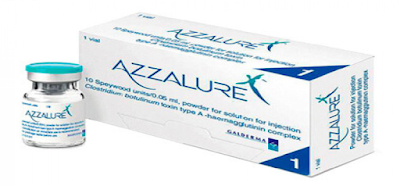Doubts!! More doubts about Derma Filler? So, if your friends and Google leave you with even more questions after you click thousands of links, read accessible content, and come to a conclusion, it's time to call a professional and have all your uncertainties cleared up.
A lot of customers come to Aesthetics by Silvie Clinic with questions that they may have gotten from reading insufficient or incompetent content online, especially when it comes to anti-aging therapies. The majority of these patients are taken aback when they learn the truth. So, you've probably figured out why we chose this topic. The goal is to provide vital facts and information on dermal fillers, a topic that is riddled with myths.
Soft tissue fillers are more commonly referred to as dermal fillers since they can be used not just in the dermis (deep layer of the skin) but also below the fat and just above the bone. Soft Tissue Fillers, Injectable Cosmetic Fillers, and Facial Fillers are some of the titles given to fillers. Hyaluronic Acid Fillers are the most often utilised fillers. Hyaluronic acid is a sugar complex that is created naturally in the human body and is responsible for giving the skin volume. Soft tissue fillers help to preserve volume, re-inflate deflated facial fat compartments, lift the face, restore lost volume, and regulate tissue hydration by gauging water to give you a more supple, smooth appearance.
Are anti-wrinkle injections and fillers the same thing?
Anti-wrinkle injections and soft tissue fillers are two completely separate treatments with two very different effects. Anti-wrinkle injections work by blocking nerve and muscle transmission, which generates wrinkles. Dermal fillers, on the other hand, replace lost volume and provide face structure, contour, and shape. Both treatments are successful, but fillers' extraordinary adaptability is growing their appeal.
Patients are particularly concerned about injectables because they do not want a Frozen image and fear that it would freeze their face and impede natural facial emotions.
The truth is that this frozen appearance is the result of utilising far more anti-wrinkle injections and fillers than is necessary to treat the wanted areas.
To avoid such risks, it's critical to select a trained injector. The end effect will be skin that is both rejuvenated and naturally smooth.
Overuse of anti-wrinkle injections, rather than fillers alone, results in a more frozen appearance. The media has perpetuated numerous illusions about the use of fillers in various areas of the face, particularly the lips. The results can be graceful and natural if done properly by a specialist who understands anatomy and is proficient in his technique.
Many patients are apprehensive about injectable treatments because they assume they would be uncomfortable.
Many people are terrified of needles, but there is nothing to fear when it comes to fillers or anti-wrinkle injections. Many fillers are combined with numbing medications to alleviate the discomfort produced by the small needle. If you desire, you can have a local anesthetic or a nerve block before the treatment. Furthermore, most patients find the operation to be comfortable thanks to the use of cannulas.
How long will the effects be visible?
The type of filler used, the region injected, and the patients' lifestyle and metabolism rate all play a role. Some fillers, which are sturdier and heftier, last for a long time, while others, which are lighter, last for a shorter time. The duration usually varies between 6 and 18 months.
Will there be any swelling or soreness after the treatment? How long will it be?
One of the most significant benefits of filler therapy is that it is a rapid process that takes around half an hour and has minimal downtime. Mild swelling and/or bruising may occur in rare situations, but this usually resolves within a few days. Furthermore, makeup can be used to hide it.
Must Read : Best Non-Surgical Aesthetic Treatments














